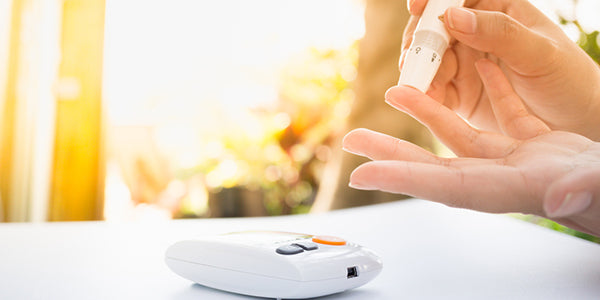
Diabetes and Blood Sugar Control in the U.S.
After analyzing 1.6 million adults with diabetes, a new study suggests Americans have a worsening control of blood sugars. Reports indicate, between the years 2006 to 2013, a decline in individuals with a hemoglobin A1C below 7% (from 56 to 54 percent) with an increase of individuals displaying a HbA1C level greater than 9% (from 10 to 12 percent), suggestive of poor diabetes blood sugar control. Hemoglobin A1C, also known as glycated hemoglobin and recognized as HbA1C, is a blood test that measures the average blood sugar up to three months. HbA1C levels include: normal at 5.6 percent or less, prediabetes indicated between 5.7 and 6.4 percent, and diabetes at 6.5 percent or greater. Generally, lower HbA1C and average blood glucose levels suggests greater diabetic control.
Researchers further delved into medication utilization for blood sugar management, including thiazolidinediones, sulfonylureas, DDP-4 inhibitors, and metformin. The use of some medications were discouraged related to their potential provocation of heart-related disorders, while others largely encouraged related to advantages of not causing weight gain or hypoglycemia. But despite the side effects, medications may display more potency reduce blood sugars, though they may be overlooked in treatment efforts. Specifically, more effective medications tend to come with a higher price and not all individuals can afford the costs, primarily related to their insurer source. To top it off, the extensive list of medications may overshadow the importance of a healthy lifestyle, thus diminishing controlled blood sugars as a whole.
Uncontrolled Blood Sugars: The Long-Term Effects
Though looking at statistics and reports on paper may not appear too startling, the long-term outcomes of unmanaged diabetes certainly can be in real-time. In fact, persistently uncontrolled blood sugars may lead to diseases of the eyes, kidneys, nerves, and the heart:
• Eyes
Constantly high blood sugars may damage the retina (retinopathy), the lining of the back of the eye that senses light. Severe damage can further create a much greater problem: blindness. Individuals with high blood sugar also increase their risk of developing cataracts (clouding of the eye) and glaucoma (buildup of fluid in the eye).
• Kidneys
High glucose and excess protein may cause the kidney’s filtering system to narrow, potentially leading to kidney disease (nephropathy) or renal failure. Insufficient kidney function further increases the risk of high blood pressure.
• Nerves
Persistent hyperglycemia puts strain on nerves (encompassing motor, sensory, and autonomic nerves) affecting a wide variety of body areas and organs. Nerve damage (neuropathy) may lead to amputation, primarily in the extremities (primarily toes and fingers).
• The Heart
Diabetes and heart disease have a strong tie, further described here. Additionally, uncontrolled diabetes earlier in life increases heart disease at a much younger age.
Taking Back Control
There is no doubt the long-term effects of uncontrolled diabetes are dangerous and potentially fatal. Lucky, though, you can take back control of diabetes by harnessing the following lifestyle changes:
• Diet
A healthy, well-balanced diet is critical in managing blood sugars. Especially related to carbohydrate sources, their intake is encouraged in consistent and moderated portions – mostly through three meals and one to two snacks evenly spaced throughout the day. But rather consuming carbs from refined flours and sugars, stick to more healthful carbohydrate sources, including whole grains, fruits and vegetables, dairy products, and beans and legumes. Consuming lean proteins and healthy fats are further encouraged to initiate satiety while naturally achieving calorie and nutrient balance.
• Exercise
Recommendations suggest to be active most days of the week, achieving at least 150 minutes. The combination of aerobic and anaerobic exercise is further encouraged to foster calorie burn during and even following exercise. Aerobic exercises include brisk walking, running and jogging, swimming, biking, and hiking while anaerobic exercise mostly encompasses any weight lifting or strength-training repetitions.
• Weight Loss
If modifying and implementing a healthful diet and partaking in consistent exercise, weight loss can naturally follow. Achieving a healthy weight, or less than 25 based on body mass index (BMI), has shown to improve insulin resistance and offer tighter control of blood sugar.
• Medication
Individuals commonly perceive medications in one of two ways: a cure-all or sign of fault or inability to self-control. While medications encourage blood sugar control, obtaining healthy levels may be a lost cause if unwilling to initiate the lifestyle changes indicated above. Additionally, a medication prescription is not always suggestive of a personal inability to gain control of blood sugars, as some individuals truly need its assistance to manage diabetes. The good news, though, is that medications may be reduced or even discontinued once blood sugars indicate improvement and stabilization through lifestyle modifications.
• Monitoring
Supplementing with the suggested compliance tips above, continue to monitor your body’s health. Keep food diaries, ultimately having the ability to indicate how foods and mealtimes affect blood sugars. Other valuable labs to monitor include HbA1C, blood pressure, a lipid panel (including total cholesterol, HDL and LDL cholesterol, and triglycerides), and weight patterns.







